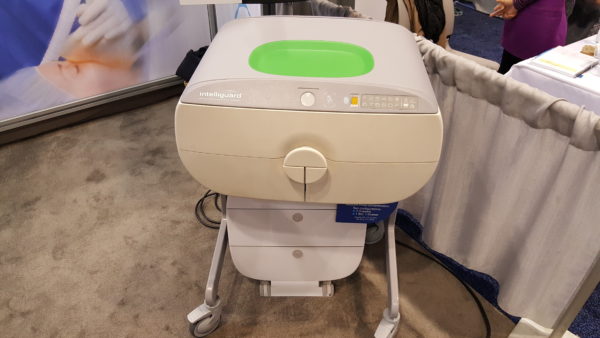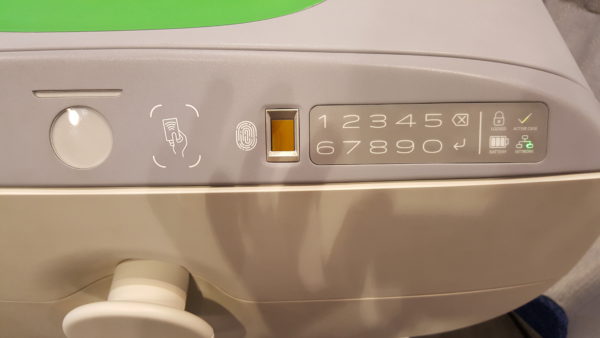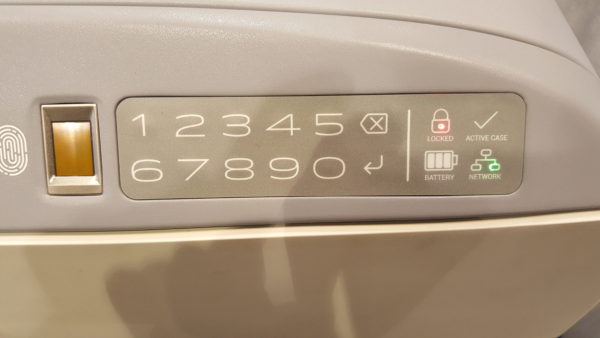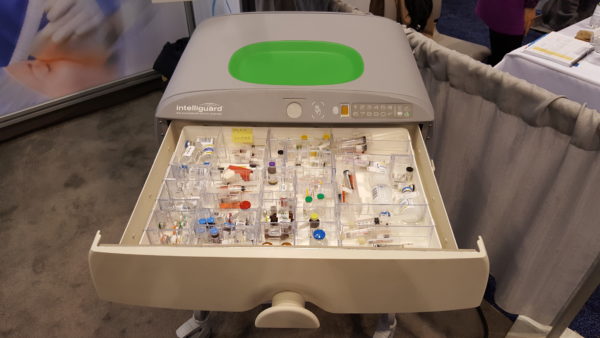The Intelliguard® Linked Visibility Inventory System™, or LVIS for short, is an RFID-enabled anesthesia cart designed for use by anesthesiology providers in the OR. I spoke about this briefly in my last podcast.
LVIS is a free-standing cart with three drawers – one large and two small. The cart looks quite different from any of the current anesthesia carts on the market. Take a look at the image below taken at the ANESTHESIOLOGY 2016 conference for a better understanding of what I’m talking about.

LVIS utilizes RFID technology to track medications in real-time. Items placed inside the cart are labeled with RFID tags – attached by the pharmacy or pre-tagged from some third parties like PharMEDium – and placed in a drawer. Once the cart is unlocked via one or a combination of locks – RIFD reader, biometric scanner, keypad for PIN (see image below) – the user has access to any medication in any of the drawers. Each time a drawer is closed, the system scans the contents and captures data on every medication, including item, quantity, user identification and time stamp. That’s it. If you take something out, the system knows. If you place something back in the drawer, the systems knows. The user is not required to debit or credit any item or scan the drug on removal or return. That’s a win for anesthesia providers and for the pharmacy. The provider gets access to medications without interring with their workflow, and the pharmacy gets real-time inventory numbers and complete transparency for what’s being used.

I like how the system was designed. There are several little things that show how much thought went into the product. For example, offering three different methods to log into the cart, or giving users the ability to configure access to each drawer individually, or offering an “in process” area to track items that have been removed but not documented as used (little green area on top of the machine), and so on. I also like how the system was designed with minimal impact on workflow in mind. Because LVIS uses RFID technology, most of what’s happening is transparent to the user, i.e. their workflow remains intact.
Not all is perfect, however. I’m not completely sold on the physical design of the system. I would like to speak to others that have seen the unit to get their feedback. The other questions I have are around integration with existing systems, especially EHRs and AIMS. That’s the elephant in the room with every small company trying to play with the big boys. Only time will tell, but I am encouraged by LVIS. I like the technology and I’m impressed with the thought that went into the product’s design.
I’m looking forward to learning more at ASHP Midyear in Las Vegas.
Couple other random images below:


Leave a Reply